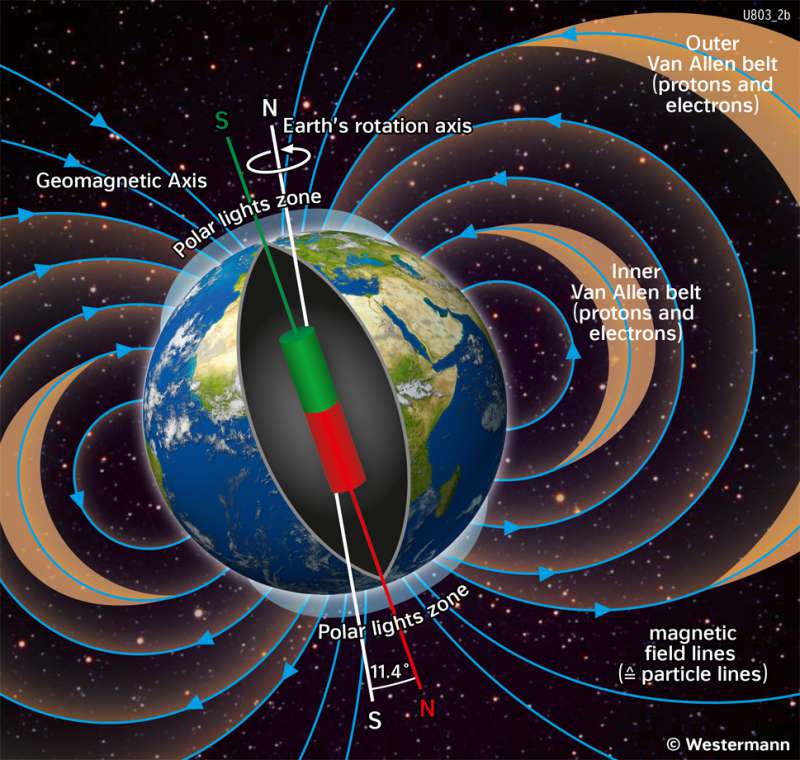Universe - Magnetic field of the Earth and polar lights
978-3-14-100890-6 | Page 11 | Ill. 11

Overview
The Earth has a strong magnetic field, which runs chaotically inside but corresponds quite well to a dipole field outside the Earth's body, similar to a bar magnet as indicated in the figure on the bottom. Like any magnetic field, it is created by "electric current", here in the form of convective currents inside the Earth, which also carry charged particles.
Characteristics of the magnetic field
The laws of physics state that every electric current generates a magnetic field around it, but magnetic fields are also created exclusively by electric current. Similar to the Sun (only slower), the field annihilates itself after a certain period and then reverses its polarity, as has been discovered by studying iron ores in rocks. The axis of the field is tilted against the axis of rotation. Along the field lines, there are charged particles (mainly protons and electrons) that originate as cosmic rays from space (mainly from the Sun). Most of them end up in the crescent-shaped so-called van Allen radiation belts, where they remain for quite a long time. Some are deflected away from the Sun into space by the solar wind.
Near the poles, the magnetic field lines enter the Earth almost perpendicularly. There, particles along the field lines can enter the Earth's lower atmosphere and, because of their high speed, ionize the air gases by collisions, i.e. knock one or more electrons out of the molecules and atoms. When the electrons are recaptured, light is emitted - similar to a fluorescent tube: the polar lights (aurora borealis/australis).




